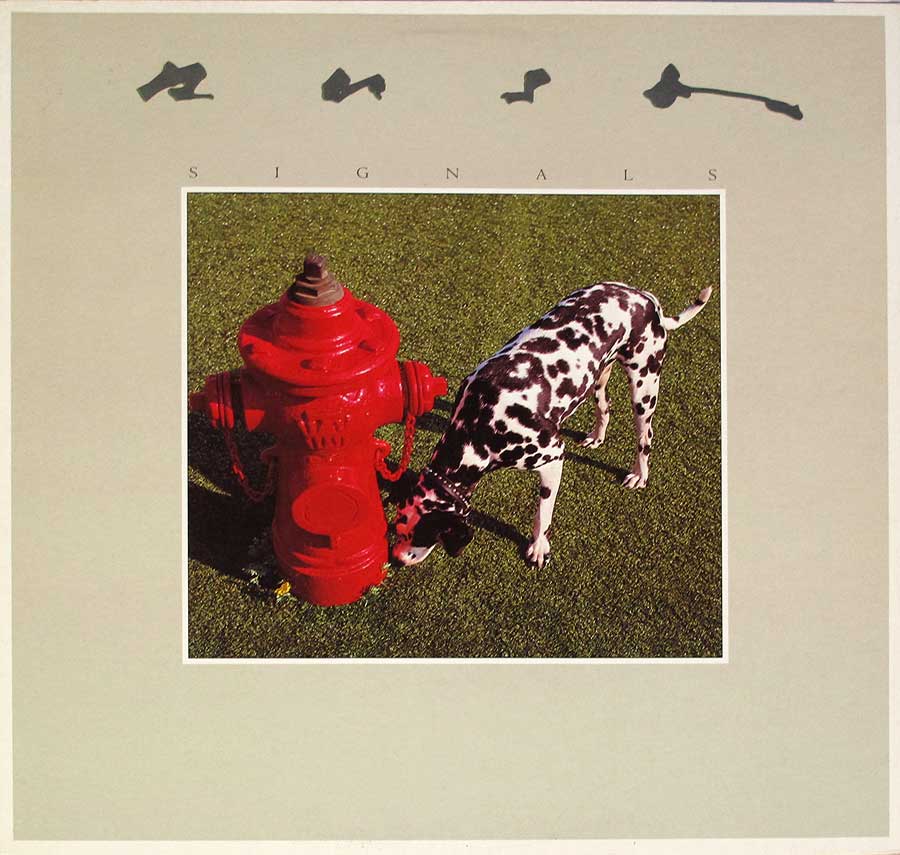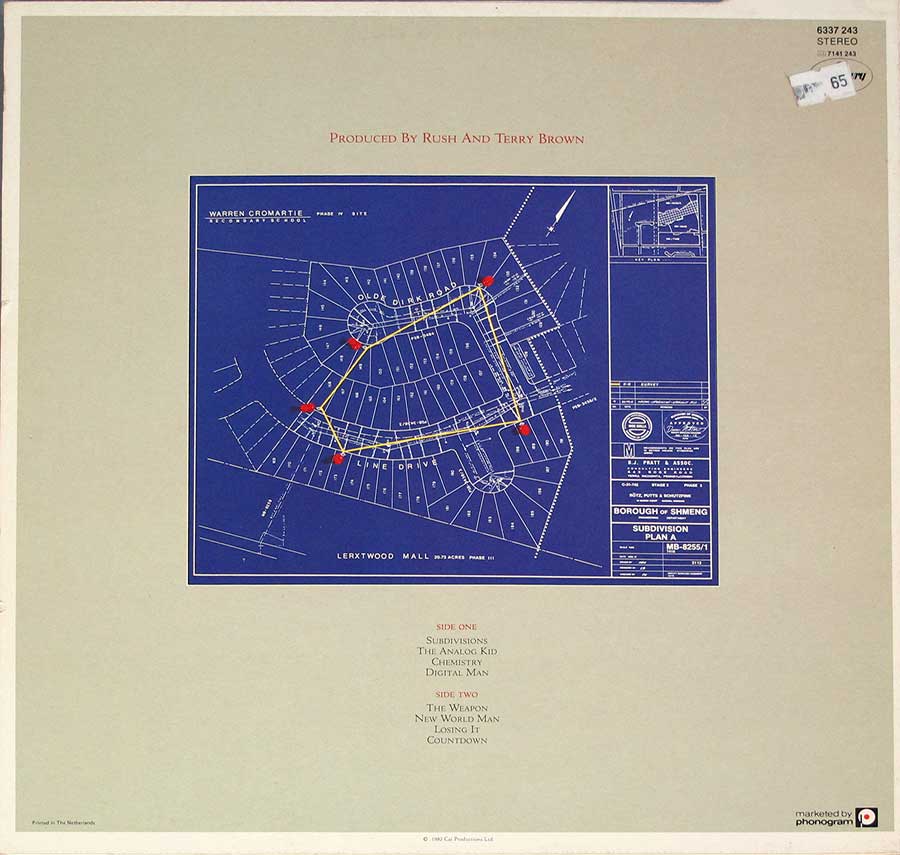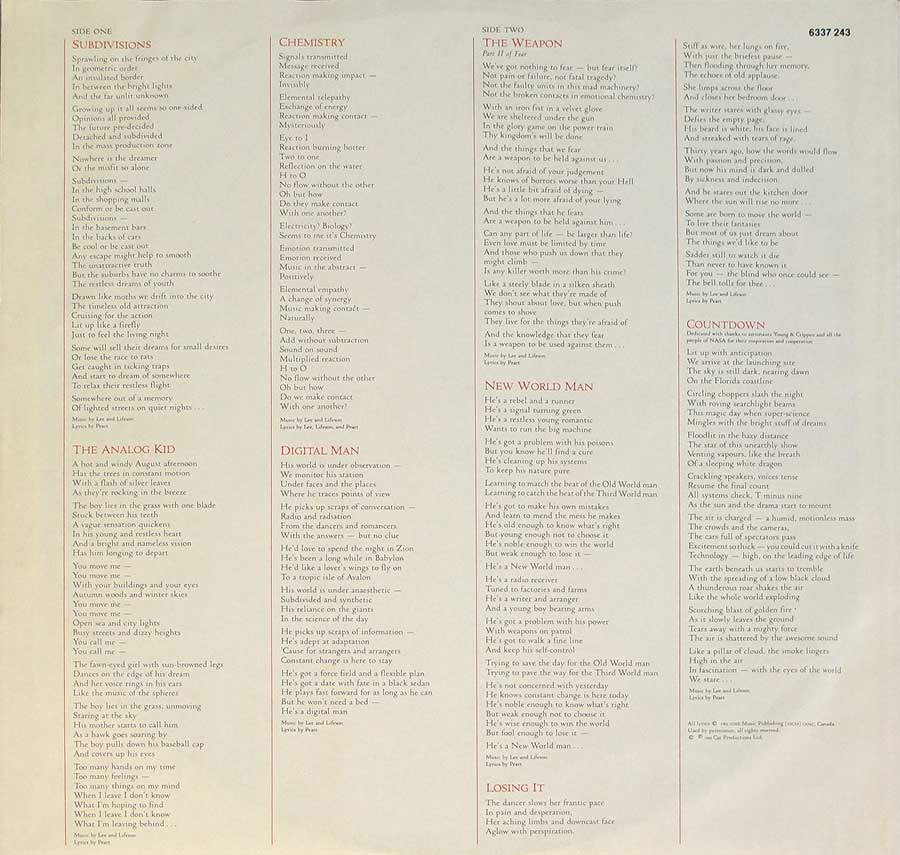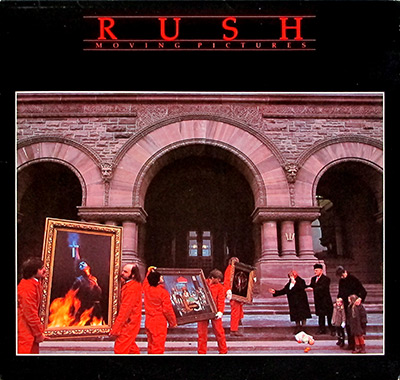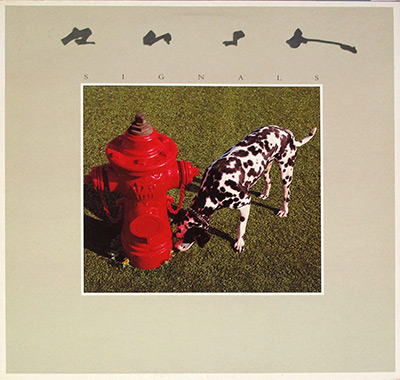"Signals" Album Description:
Rush, the iconic Canadian rock band known for their intricate compositions and virtuosic musicianship, added another jewel to their crown in 1982 with the release of "Signals". This 12" LP vinyl album, a treasured item in the collection of any rock enthusiast, not only encapsulated the band's musical prowess but also featured compelling cover artwork, all of which makes it a fascinating addition to your vinyl collection.
The Making of "Signals"
"Signals" marked Rush's ninth studio album, and it was a pivotal moment in their career. The album was produced by the band themselves, alongside renowned producer Terry Brown. The sound engineering was masterfully handled by Paul Northfield, ensuring that the music was captured with precision and clarity.
Recorded at Le Studio from April through July 1982, "Signals" was crafted in a studio known for its picturesque location in Quebec, Canada. This tranquil setting undoubtedly influenced the album's mood, which often features introspective and thought-provoking lyrics.
Bob Ludwig, a distinguished name in mastering, lent his expertise to the album's final touch, ensuring that the sound quality was nothing short of exceptional.
The Artwork and Design
One cannot discuss "Signals" without mentioning the striking album cover. Designed by the talented Hugh Syme, who was known for his collaborations with Rush, it depicts a mesmerizing blend of art and symbolism. The cover portrays a Dalmatian standing on a rocky shore, gazing at a red star. This enigmatic imagery perfectly complements the album's themes of communication and human connection, as depicted in songs like "Subdivisions" and "New World Man".
Deborah Samuel, a renowned photographer, captured the image that adorns the album cover. Her work beautifully encapsulated the mood and atmosphere of "Signals", making it an iconic piece of rock album art.
The Band's Lineup
As with any Rush album, the trio of Geddy Lee, Alex Lifeson, and Neil Peart shines brightly on "Signals". Geddy Lee's distinct basslines, Alex Lifeson's virtuoso guitar work, and Neil Peart's intricate drumming create a soundscape that is instantly recognizable as Rush.
Geddy Lee handles bass and vocals, his unmistakable voice delivering the album's lyrics with emotion and precision. Alex Lifeson's guitar work adds layers of complexity to the music, while Neil Peart's drumming is a masterclass in rhythm and technique. Together, they create a sonic tapestry that is the hallmark of Rush's sound.
